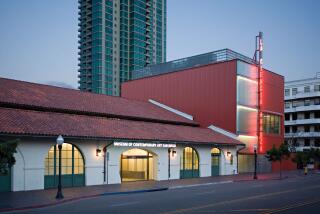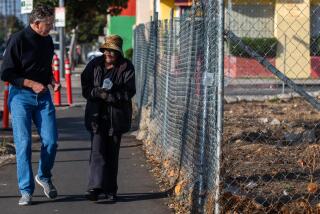Brea Hopes to Celebrate Its Crudeness--With a New Museum About Oil
- Share via
A museum in its planning stages for the City of Brea will have plenty of oils, but none by Renoir or Cezanne.
This museum will be dedicated to the kind of oil that makes cars run.
Brea, which grew up around oil wells, is planning its first museum--one that will largely center on the petroleum industry.
The plan is in its infancy as the Brea Historical Society searches for a new site to move its office and eventually open a small museum. Last week, the City Council designated a site next to the senior center on Elm Street and Sievers Avenue for the historical society’s plans.
“We want them to know that this community once was centered around oil,” said Karl H. Fanning, president of the historical society.
Today, Brea may not quite look like an oil town, but at one time there was little else besides oil rigs tapping the Earth for its black gold. Even the name suggests its origins: “brea” means tar in Spanish.
Artifacts Kept in Tiny Room
For now, the historical society keeps most of its artifacts and memorabilia stored in a 10-foot-by-10-foot room, with a few others on display at its office in the old Brea City Hall. But those cramped quarters will be far from adequate when the 5-year-old society begins searching for other photos, oil tools and documents to add to the collection.
The society also hopes to acquire old pumping equipment to add to tools already in the collection, such as long tongs used for handling hot metal, Fanning said.
By the next Fourth of July, the historical society hopes to unveil an outdoor exhibit with the old heavy rigs and other equipment set up at the former City Hall site on Brea Boulevard, he said.
Meanwhile, the society must decide whether it wants to build a new facility for its offices and museum or move to an old historic home.
One spot being considered for the move is the Sievers-Durkee House on Berry Street and Imperial Highway. But because it would have to be relocated and need some reconstruction, costs could run between $200,000 and $400,000. In that case, it may be cheaper to build a new building, Fanning said.
Brea Mayor John Sutton said the proposed museum and the outdoor exhibit would be a regular stop for schoolchildren on field trips.
“It would be educational. They could see what Brea looked like,” said Sutton, adding that such exhibits would show children the “important features of oil drilling and how it applies to the city as it is right now.”
The exhibits will relay the importance of oil in the city’s history by “telling a story,” Fanning said.
Chunks of Oil-Soaked Earth
That story would take visitors back to the early days of California, when settlers from the Pomona and Santa Ana valleys came to Brea Canyon to cut chunks of oil-soaked earth from canyon walls to heat their homes and waterproof their roofs.
In 1894, the Union Oil Co. of California purchased about 1,200 acres from the Stearns Ranch Co. and began drilling for oil the following year. Other companies, including Brea Canyon Oil Co. and Shell Oil Co., followed suit, buying land in what is now Brea and its unincorporated surroundings.
In 1911, the town of Brea began taking shape with the construction of homes and markets.
On Feb. 23, 1917, Brea--population 732--became a city. Today, its population numbers about 35,000.
“The city grew from an oil company,” City Development Services Director William Kelly said. “We want to make the kids aware of what things used to be like.”
More to Read
Sign up for Essential California
The most important California stories and recommendations in your inbox every morning.
You may occasionally receive promotional content from the Los Angeles Times.









